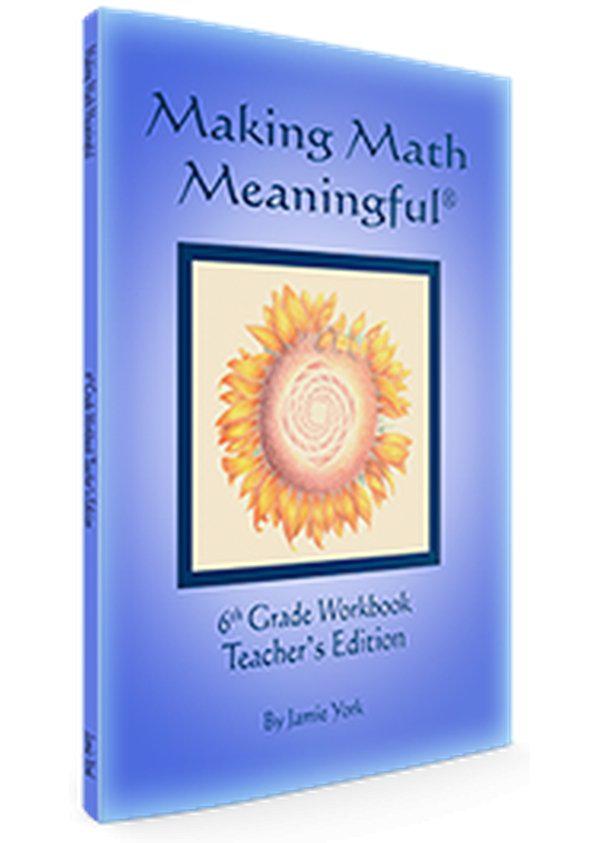Making Math Meaningful - A 6th Grade Workbook Teacher's Edition
$18.00
The sheets found in this workbook are designed for use as homework assignments during the sixth grade year. This workbook emerges from a carefully thought-out, developmentally based math curriculum, which is fully described in my book, Making Math Meaningful – A Source Book for Teaching Middle School Math, a book that makes available the material I have discovered and developed while teaching middle school math for several years in a Waldorf school. This material is both exciting and age-appropriate for developing the minds of this age group. It is an alternative to the normal “they-need-all-this-stuff-in-order-to-stay-ahead” approach.
6th Grade – The Year for Strengthening Skills. While there are new topics to be introduced in sixth grade math, much of the year is an essential review, or a furthering of material introduced in earlier years. The challenge is to weave in the review in such a way that there is always something new. Therefore each worksheet includes several review problems. The goal is for the students to enter seventh grade feeling that division, fractions, and decimals are all easy, and for them to be excited about learning math.
Who can use this workbook? While most of the author’s teaching experience is within the Waldorf school system, the curriculum presented in A Source Book for Teaching Middle School Math can be effectively used by any teacher or homeschooling parent wishing to bring meaningful, age-appropriate material to their students.
Required reading. It is necessary to read Making Math Meaningful – A Source Book for Teaching Middle School Math in order to fully understand the material in this workbook.
Topics covered in the 6th Grade workbook.
This Teacher’s Edition contains answer keys!
- The review topics from previous years are multiplication, short and long division, fractions, decimals, measurement, unit cost, factors, and
estimating. - The new topics for sixth grade are casting out nines, exponents (powers), square roots, divisibility, formulas, the metric system, converting decimals to fractions and fractions to decimals, angle measure, percents, mean/median/mode, pie charts, line graphs, area and perimeter, business math (discount, profit, etc.), ratios, rates (speed, wages), exchange rate, and complex fractions.
- Mental math. Jamie York strongly believes that it is as important as ever for children to develop the ability to do calculations in their head. Each worksheet therefore begins with a section on mental math, focusing on four areas (each one of which is listed and described in Making Math Meaningful: A Source Book for Teaching Middle School Math):
- Multiplication facts, with selected facts from the 13 through 18 tables, and the 25’s table (i.e. 15·5=75);
- Powers with base 2 through 5 (i.e. 34 = 81);
- Fraction to decimal conversions (3/8 = 0.375);
- Math tricks, as described in A Middle School Math Curriculum, Appendix B.

